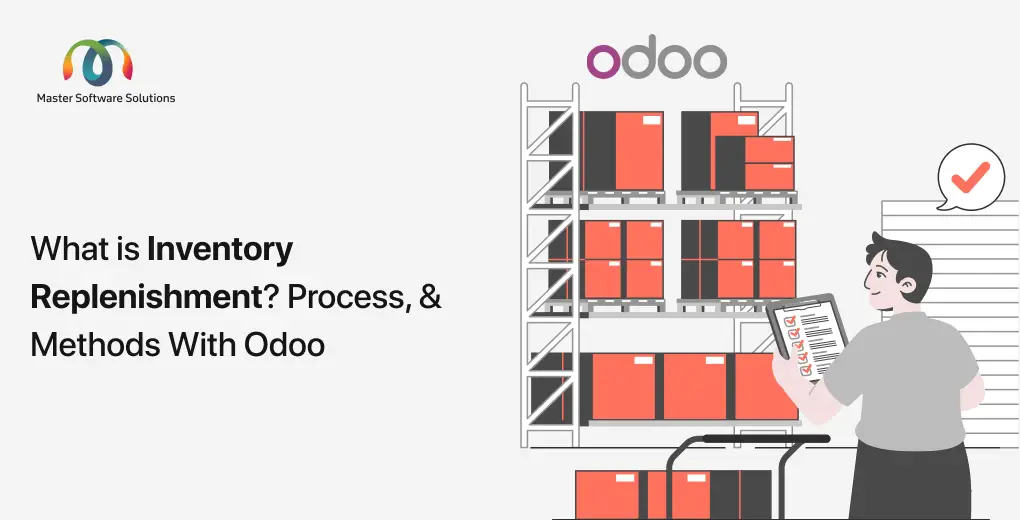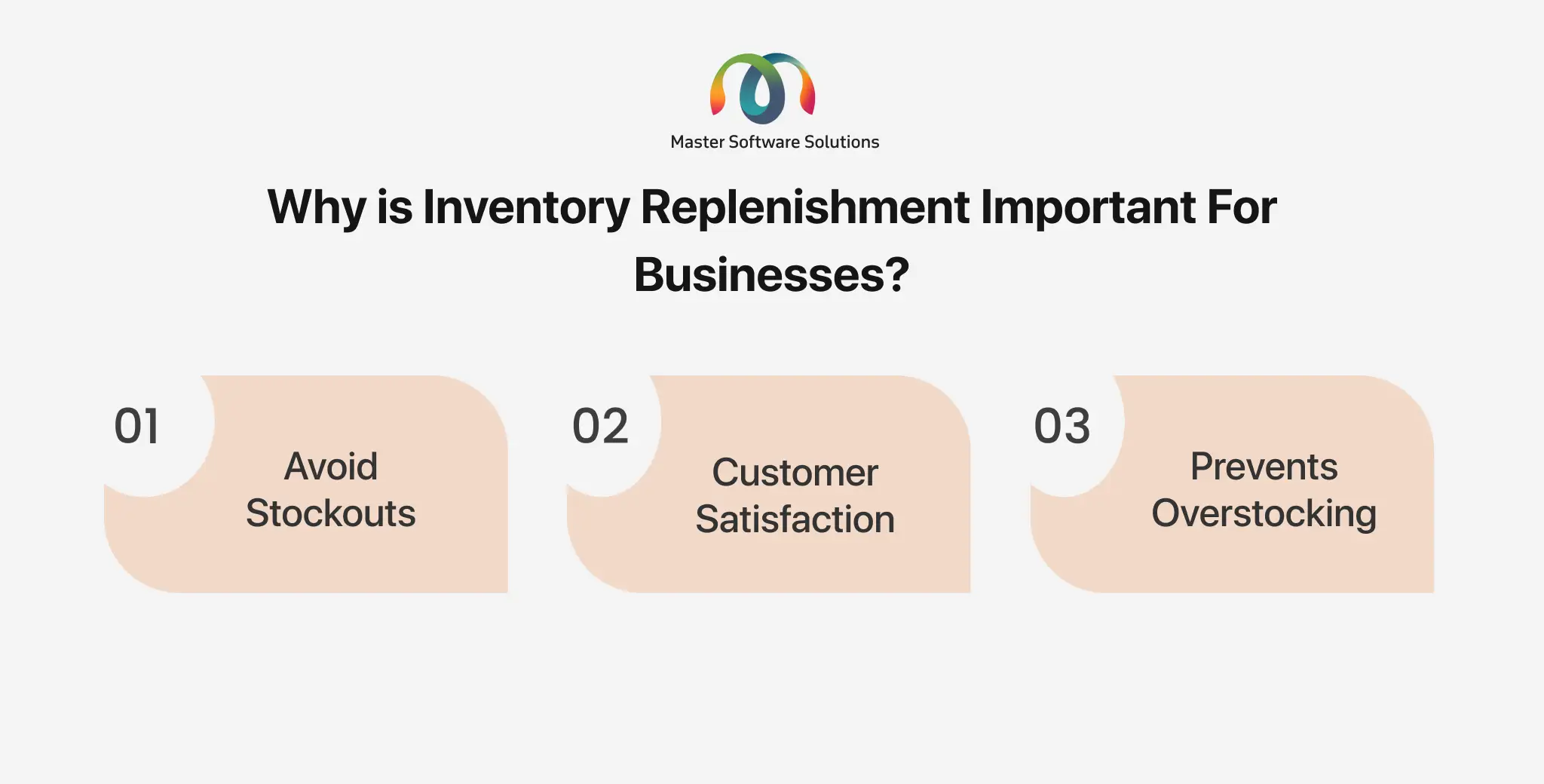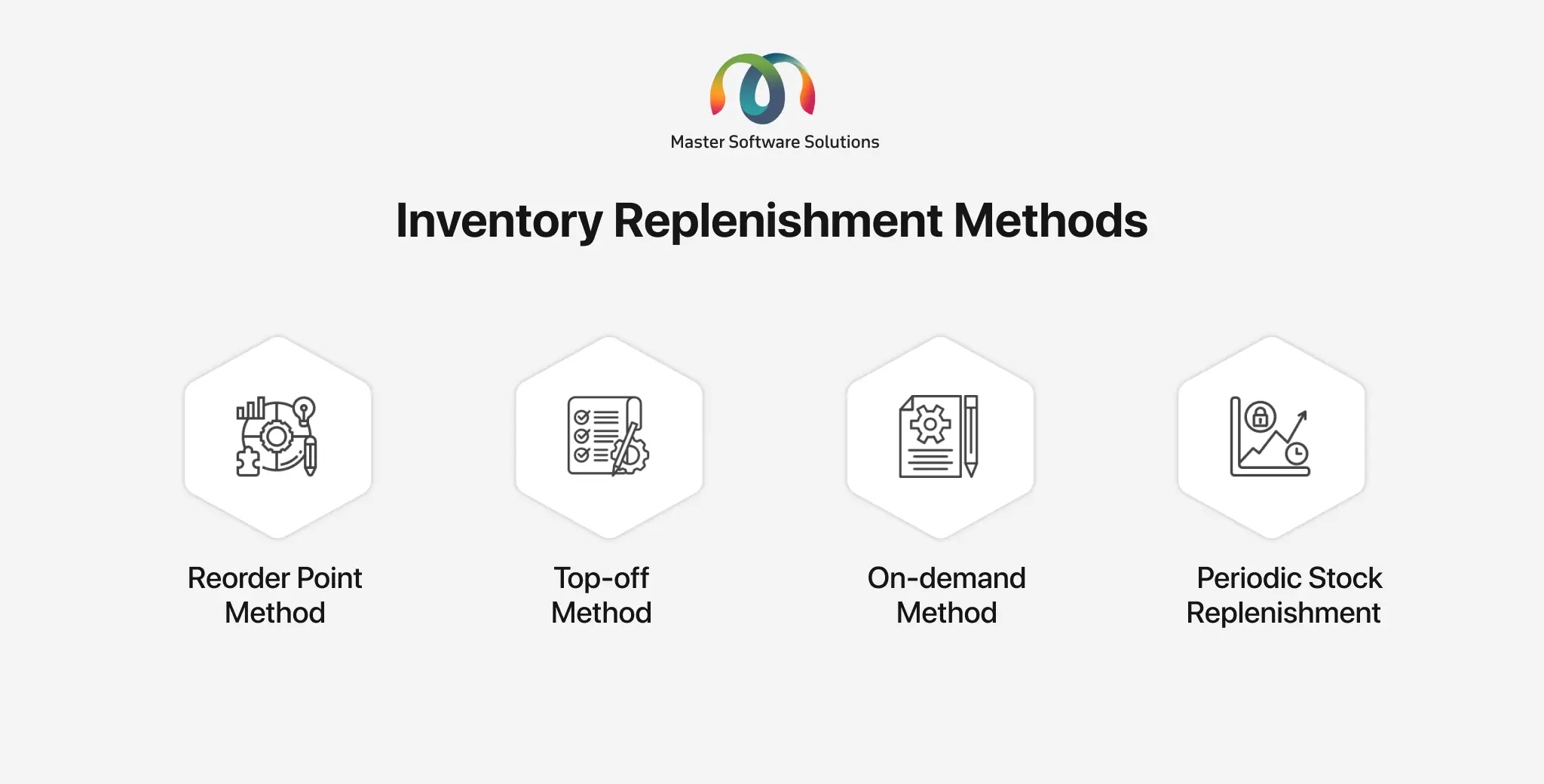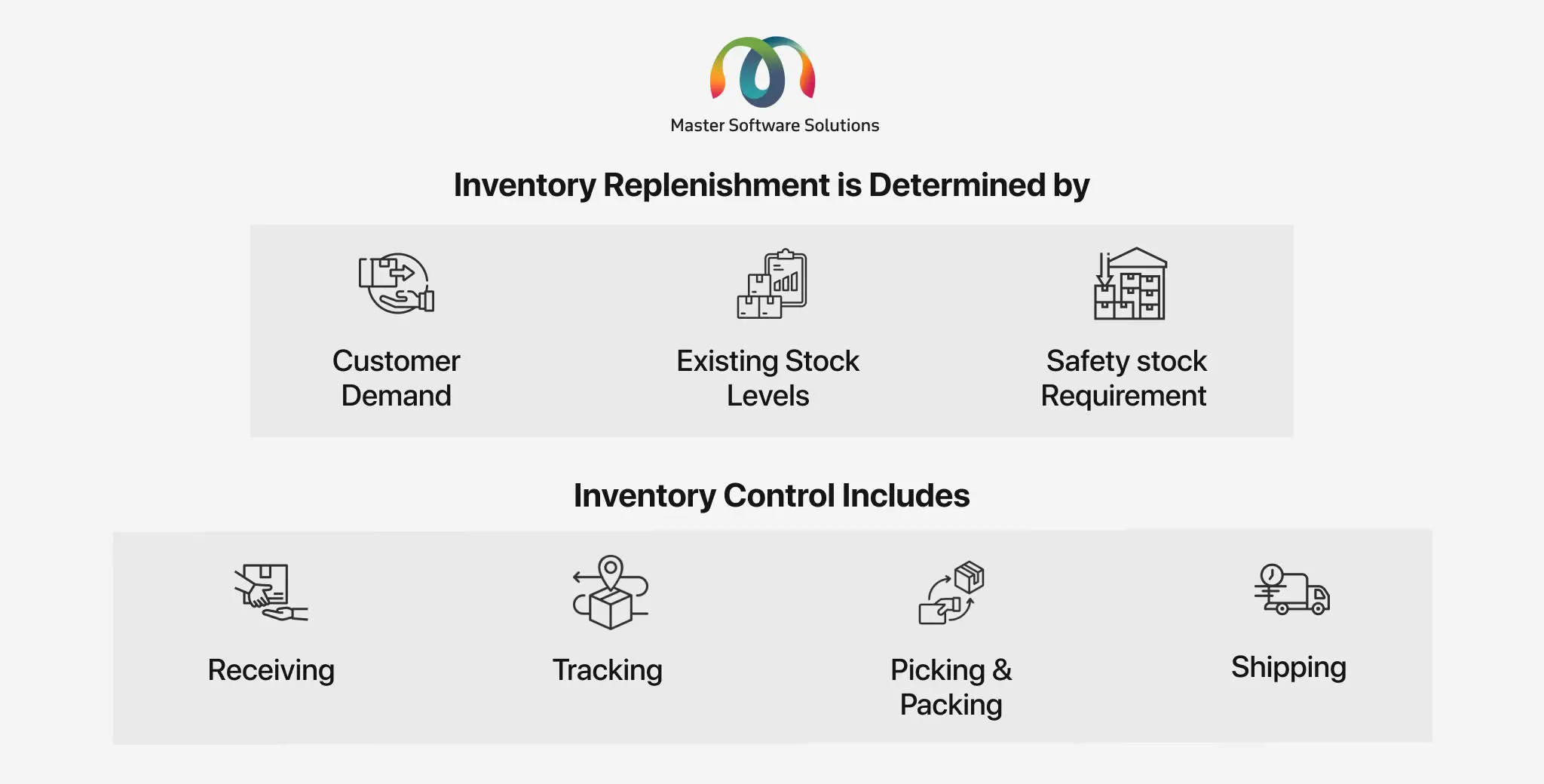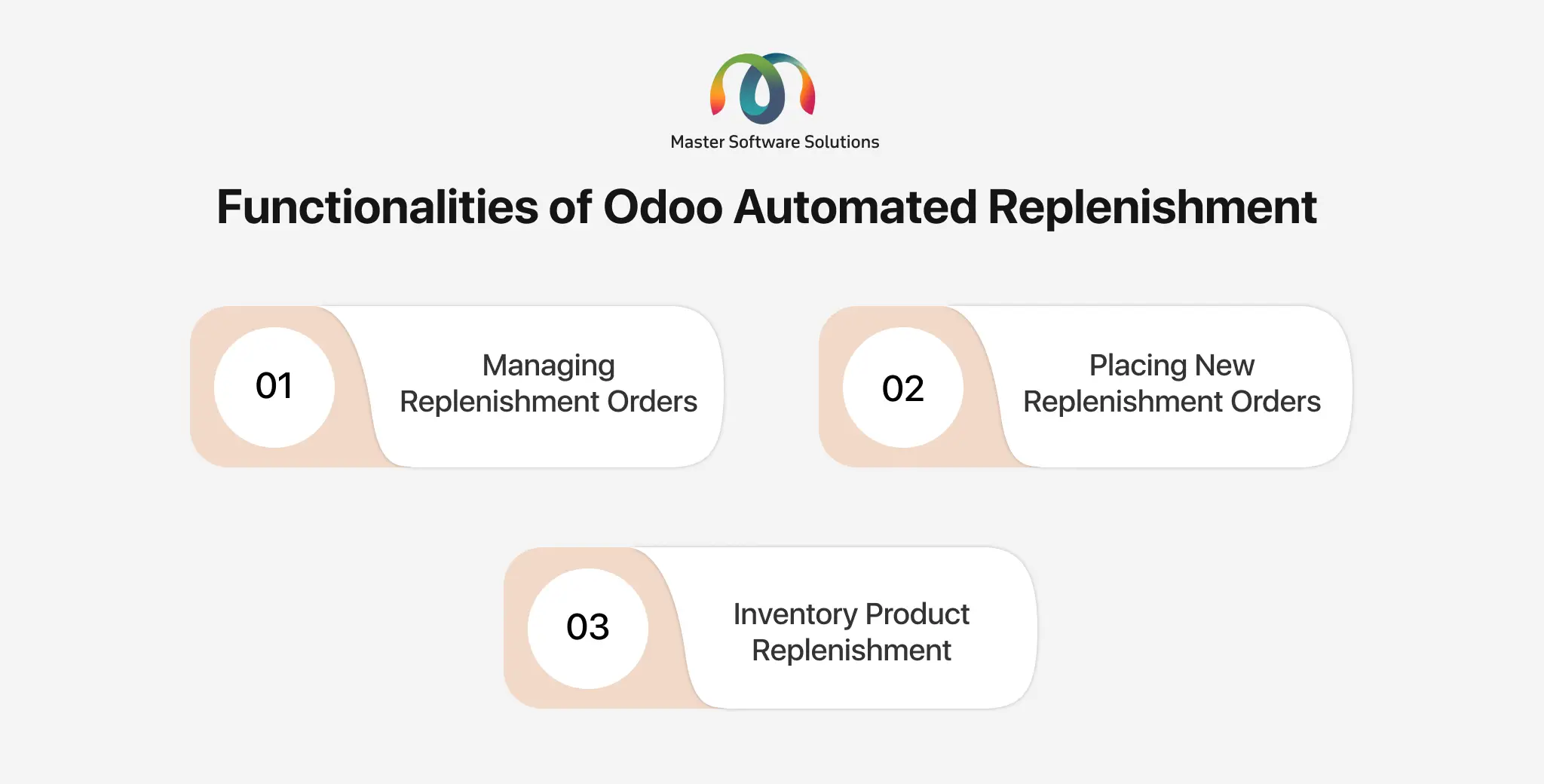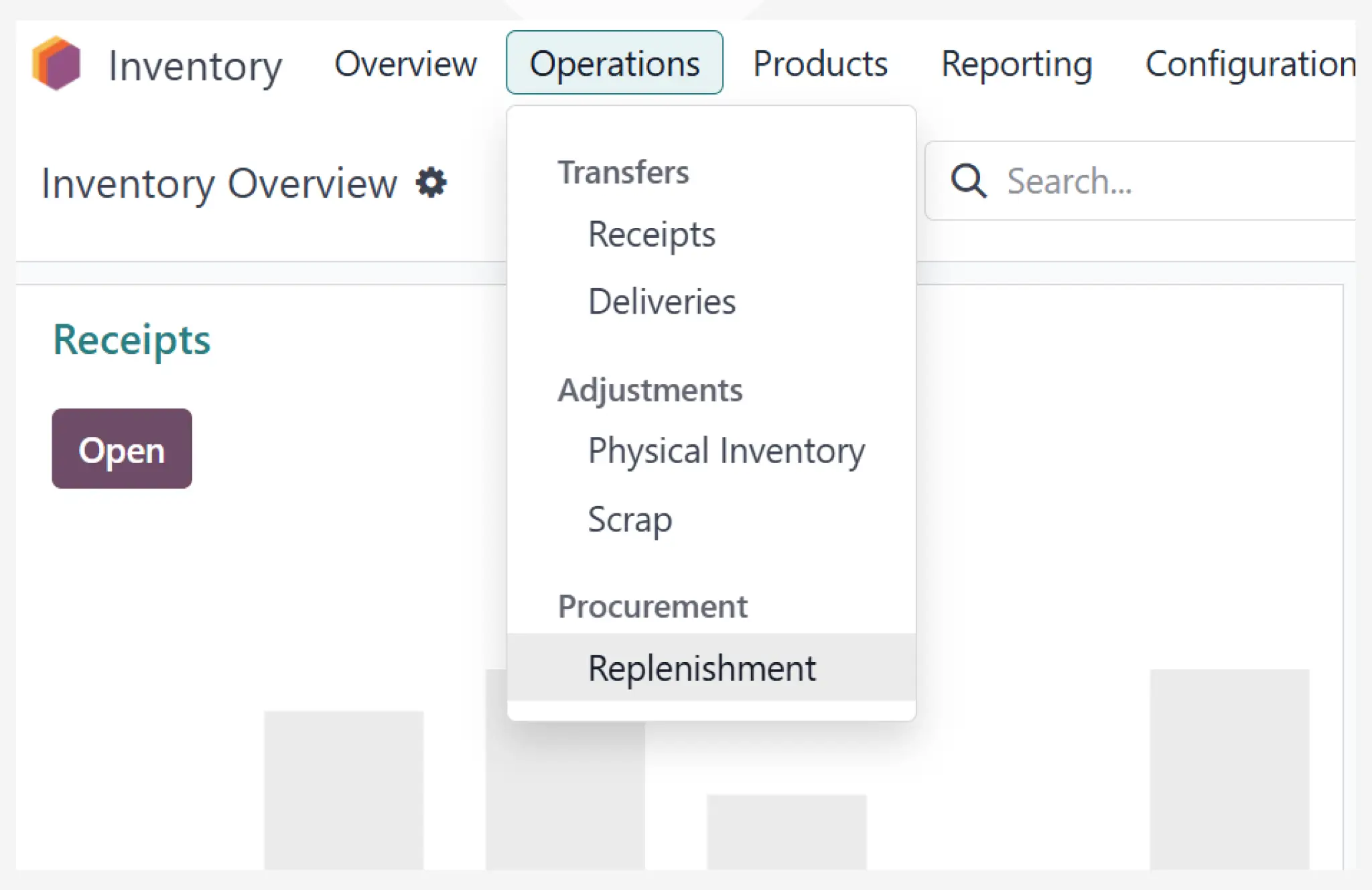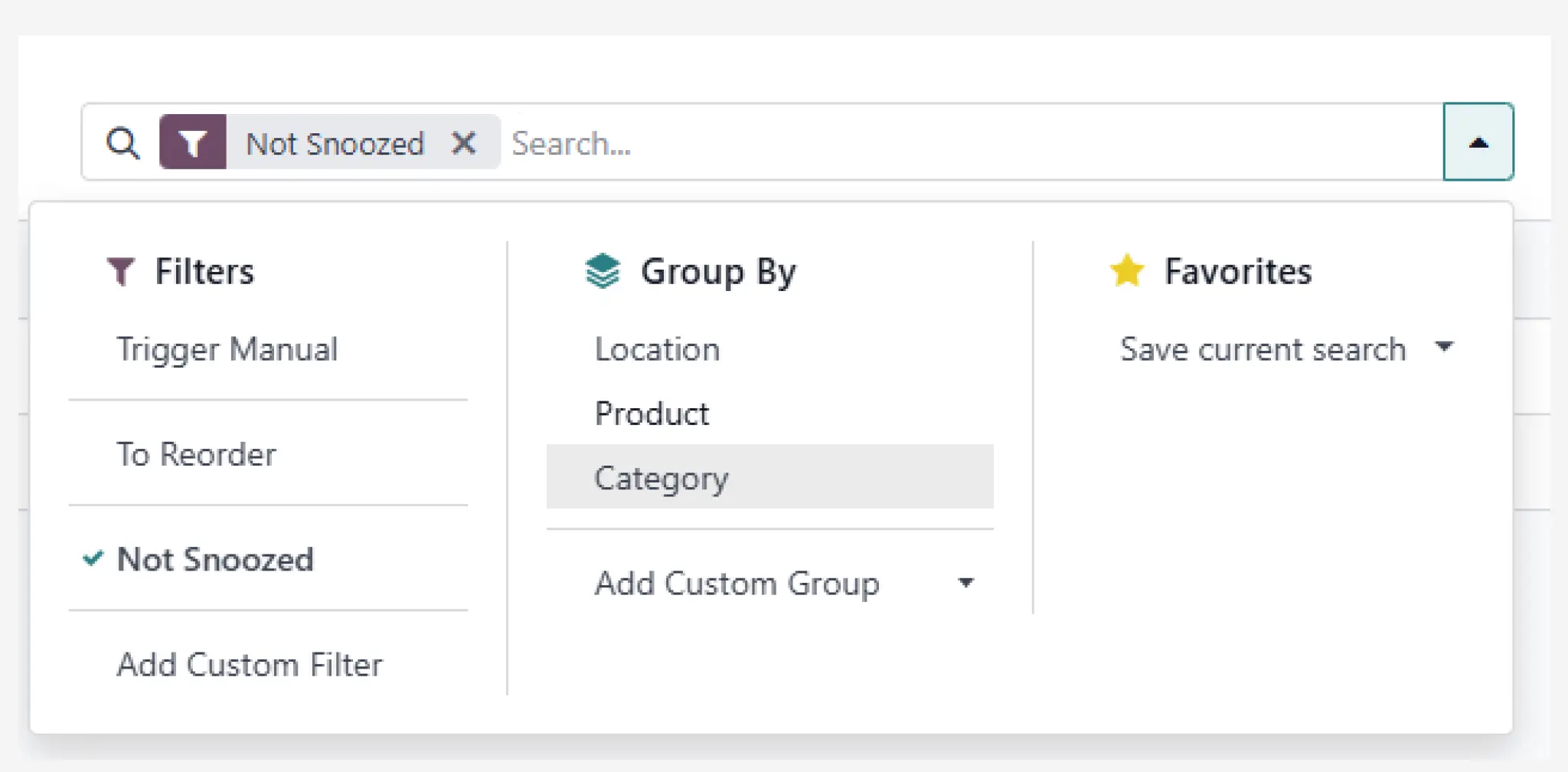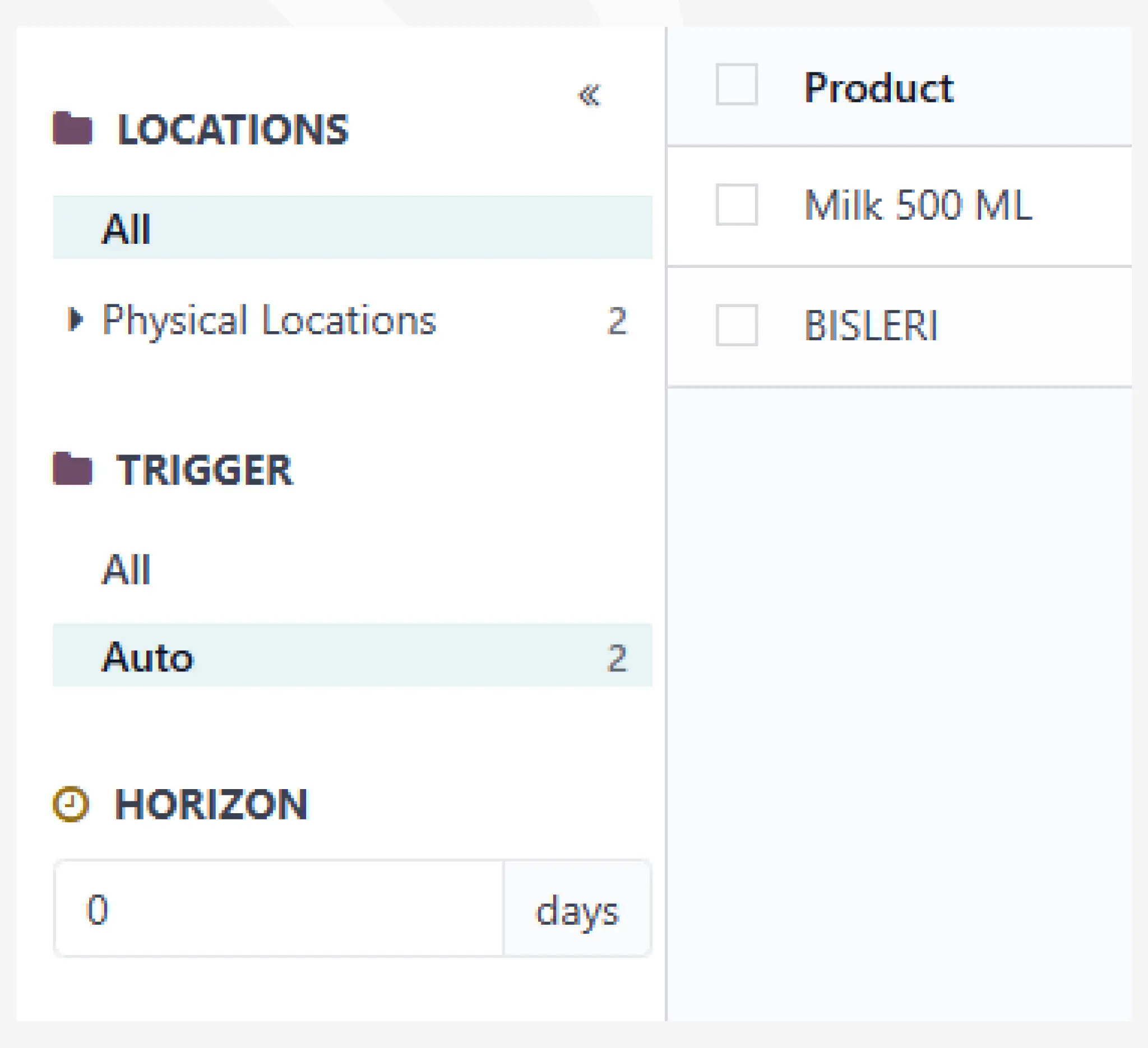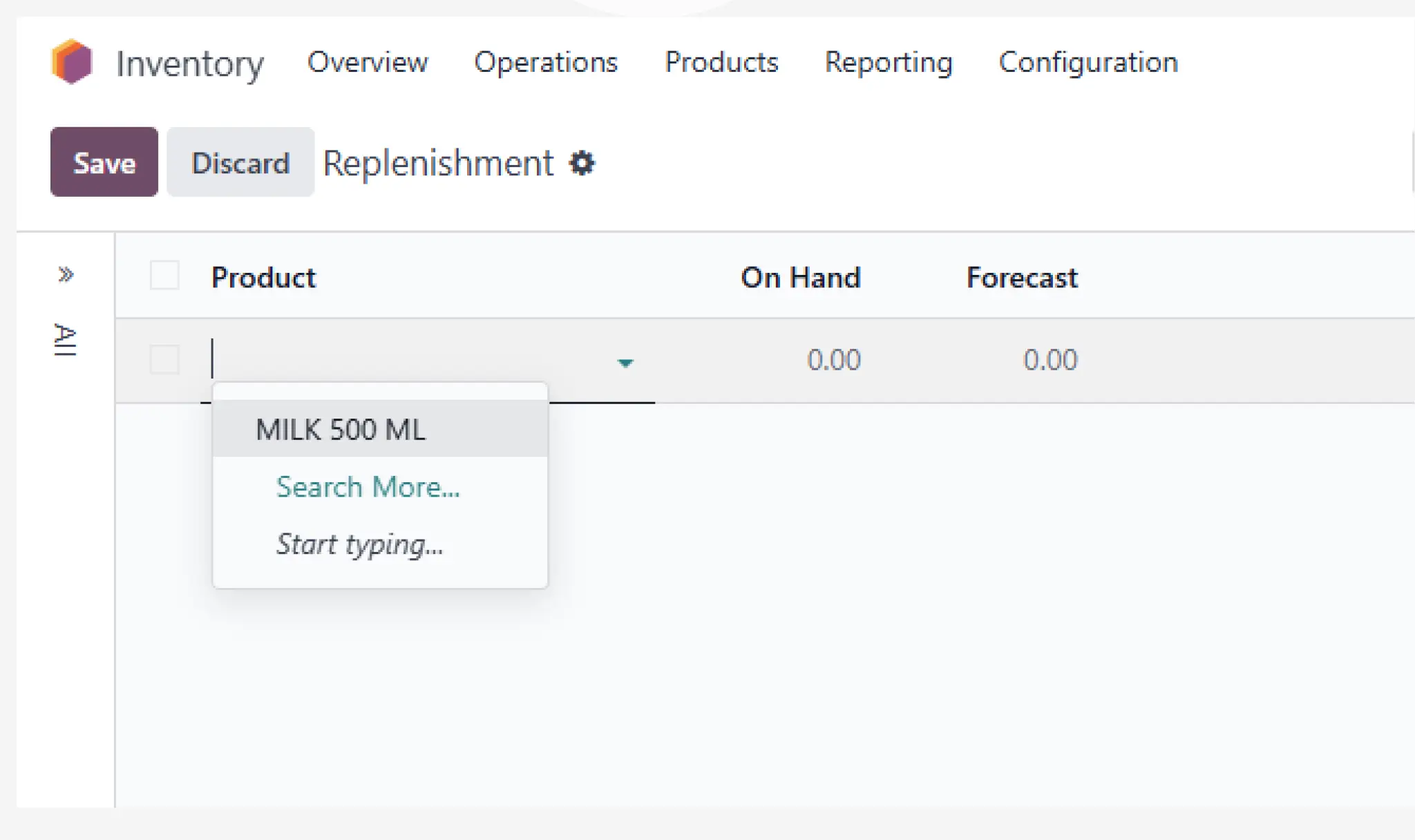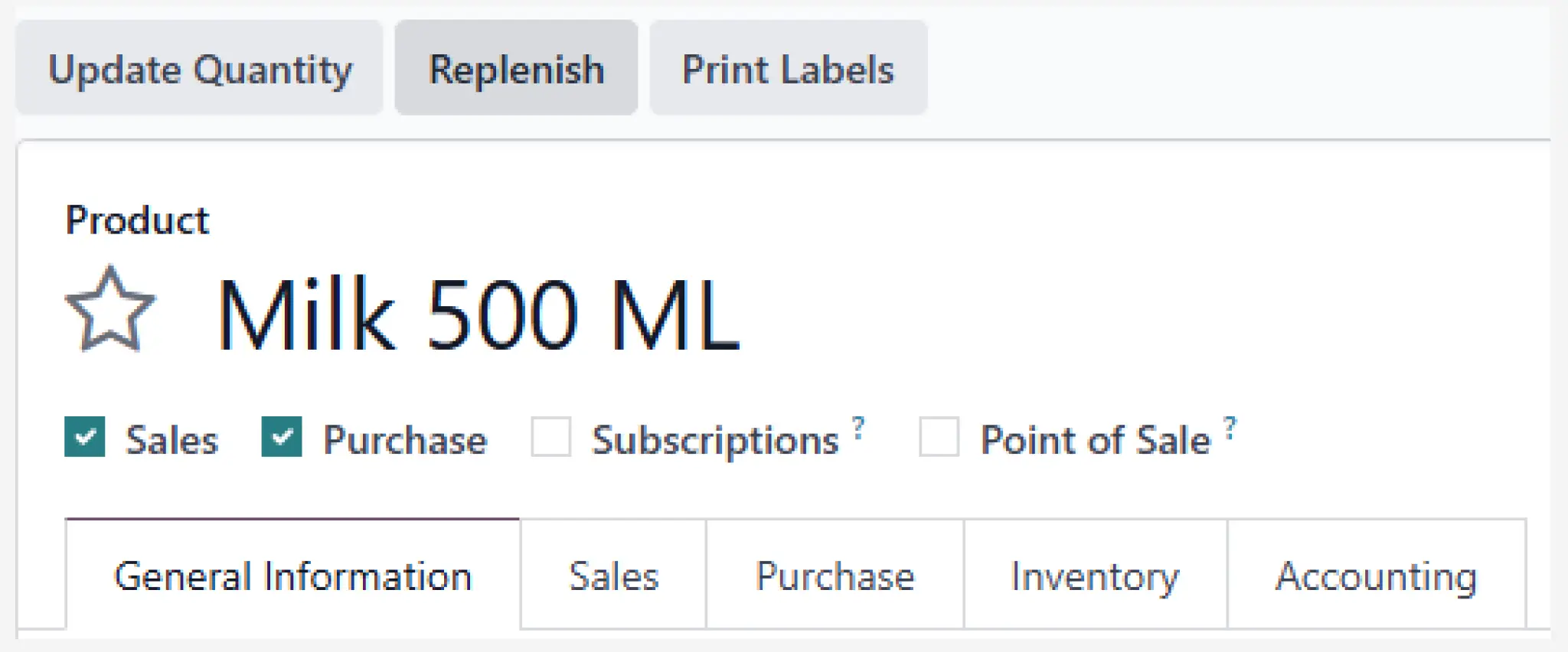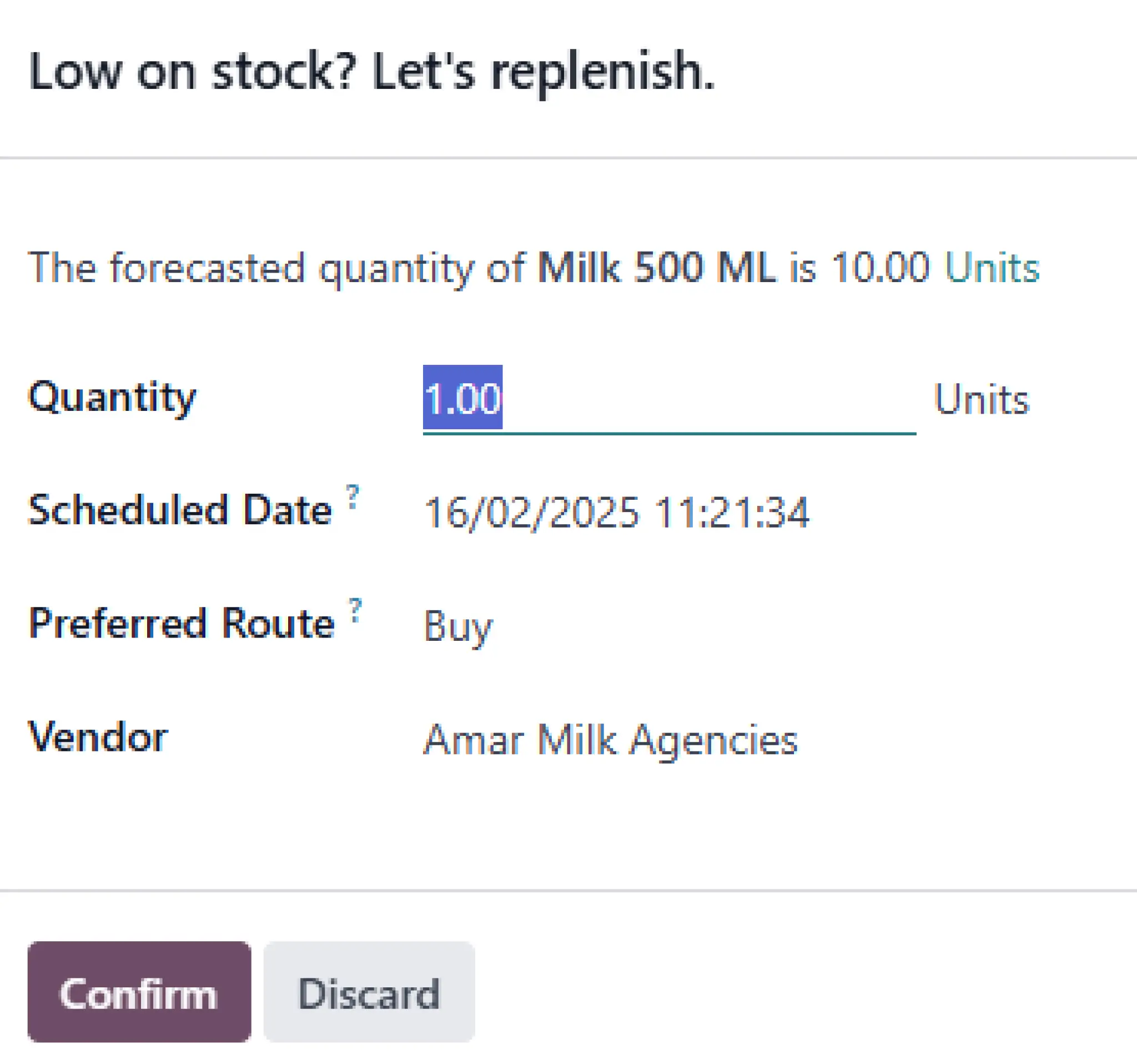Efficient inventory management is crucial for every business, regardless of size or type. It helps reduce costs, boost efficiency, and improve customer satisfaction.
Inventory replenishment is an essential process in inventory management. It involves moving inventory from one place to another to fulfill customer demands. This blog explores how Odoo’s automated replenishment features can help you avoid overstocking and stockouts.
Table of Content
What is inventory replenishment?
Inventory replenishment is a reactive process of recording and moving stock to fulfill customer demands while avoiding stockouts and overstocking. This process may include purchasing inventory from the supplier, moving stock from one warehouse to another, transporting raw materials from suppliers to the manufacturing factory, or moving inventory from reserve storage to packing and shipment places.
Master Software Solutions provides Odoo Plugin for warehouse allocation – Nearby Warehouse Allocation Management, which allows you to assign the nearest warehouse to the customer for fast deliveries.
Inventory replenishment includes:
- Tracking sales – Analyze sales to determine when and which product to restock.
- Demand forecasting – Use historical data to anticipate demand, ensuring the demand is fulfilled.
- Moving inventory – Transferring inventory from storage to warehouses and packing and shipping places.
- Coordinating deliveries – Ensure the inventory arrives at the warehouse on time to avoid product expiry and delayed shipping.
Why is inventory replenishment important for businesses?
Efficient inventory replenishment processes empower businesses to fulfill customer demands on time while ensuring you do not overstock, keeping customers happy, boosting profits, and reducing costs. The key benefits of effective inventory replenishment are:
Avoid stockouts
Timely inventory replenishment ensures you have the required stock to fulfill customer demands while preventing stockouts and backorders (orders that can not be fulfilled on time as the product is unavailable in the stock). According to a study, inventory distortion produced losses totaling $818 billion globally in a year, 52% of which was attributed to out-of-stocks and the remaining 44% to overstocks.
Customer satisfaction
Minimizing stockouts or backorders enables you to fulfill customer demands on time, boosting revenue and profits. Too many stockouts can increase customer frustration and switching brands.
Prevents overstocking
Efficient inventory replenishment can help businesses avoid holding too much stock. Overstocking can lead to product spoilage, the most common use case for perishable products, and trend change, making the product value obsolete. Such inventory is either lost or sold under heavy discounts, resulting in financial losses. Overstocking also carries storage costs, which can be very high.
Factors that impact inventory replenishment
Even when inventory is replenished efficiently, certain unexpected aspects can hurt your inventory. These might include:
Different sales from forecasts
Actual sales can vary from anticipated sales. Factors that influence sales include customer demand and changes in trends. If a customer suddenly loses interest in your product because it is now available at a significantly lower price, forcing you to sell it at a discount to keep the stock moving.
Warehouse space
Not having enough warehouse space can limit your chances of fulfilling the projected customer demand. You need to adjust your replenishment plan.
Supply-chain lead time
The lead time is the period between placing a purchase order and receiving the goods or inventory. Supply chain disruptions can increase lead time and delay the order fulfillment process.
Inventory replenishment methods
Various approaches are used to define when and how much to reorder. These approaches are chosen based on factors such as business type, customer demand – constantly fluctuating or steady, and specific inventory items. Most businesses use a combination of two or three approaches to determine the inventory replenishment plan.
Reorder point method
The reorder point method involves setting a minimum inventory, which triggers replenishment when this level is reached. Defining inventory thresholds prevents stockouts. You can also determine the maximum inventory to avoid overstocking.
Top-off method
The top-off method also known as lean time replenishment, involves using low periods or downtime (when the warehouse is less busy or has very less active order processing) to replenish picking shelves and ensure the inventory is readily available when the order volume increases.
On-demand method
This method is determined by customer demand. The businesses reorder inventory to fulfill the current order while ensuring they have an optimum stock level to avoid demand fluctuations.
Periodic stock replenishment
This approach for inventory replenishment reviews inventory levels at set intervals to determine whether to replenish. Large warehouses and other companies with predictable demand often use this method. However, one can not analyze if the inventory falls between those dates.
Inventory Replenishment Vs. Inventory Control
Inventory control and replenishment are two major aspects involved in efficient inventory management. Controlling inventory includes managing and tracking inventory in the warehouse or retail outlet to ensure efficient tracking and organization.
On the contrary, inventory replenishment optimizes the inventory reordering process to ensure that you have an optimal inventory level to fulfill your customer demands.
How does inventory replenishment work?
Inventory replenishment is a complex process that considers various factors. It requires accurate demand planning, supplier lead time (the time from placing an order to the inventory being ready to use), and the desired inventory count of the safety stock. Many businesses have started using advanced algorithms and predictive analysis to anticipate future demand.
You must consider bulk buying discounts, shipping distance, vendor minimum quantity restrictions, and safety stock requirements impact your overall costs and deliveries.
Addressing the stockout and overstocking issues can help you reduce inventory costs by 10%.
How does inventory replenishment work?
Odoo ERP is a comprehensive suite of business applications that enables businesses to manage their entire business operations, including manufacturing, warehouse management, sales and marketing, quality control, maintenance, product lifecycle management, and inventory management. Here, we’ll discuss replenishment in Odoo and explore how it can help your business.
Replenishment process in odoo
In the Odoo inventory module, replenishment refers to maintaining optimal stock levels by automating purchase orders or generating transfer requirements when the inventory level hits the threshold.
- Reordering rules – These rules define when and how stock should be reordered. They are the parameters set for each product in the inventory. This includes factors such as minimum and maximum quantity and preferred suppliers.
- Minimum stock rule – Refers to the minimum product quantity to be maintained in the inventory. Minimum stock is also referred to as threshold stock. When the Inventory level falls below the threshold, Odoo triggers the replenishment process.
- Replenishment method – Odoo inventory optimization uses various replenishment methods:
- Make-to-order – The purchase order is placed when a sales order is confirmed or a manufacturing order is created. This replenishment method is suitable for products manufactured based on customer demands.
- Make-to-stock – The products are stocked in advance based on the anticipated demand. Purchase orders are automatically generated when their level falls below the minimum threshold.
Functionalities of Odoo automated replenishment
The Odoo automated replenishment refers to automating purchase order creation or generating inventory transfer requests based on the minimum/maximum inventory replenishment rules. The features and functionalities of Odoo for inventory replenishment are:
Managing replenishment orders
The Odoo inventory module has a replenishment submenu under “operations,” from where you can access the replenishment report.
- Please check the list of determined replenishment orders. The list includes the products’ names, locations, on-hand, forecast, preferred route, vendor name, minimum quantity, maximum quantity, to order, and UoM (Units of Measurement).
- You can use the search bar to see specific replenishment orders or use filters to narrow down your search. The “Group By” option allows you to segment your order based on their location, category, and products.
- The sorting panel on the left lets you arrange the information based on the locations.
- Use the “Trigger” option to distinguish between manual replenishment and all replenishment requests.
Placing new replenishment orders
- To create a new replenishment order, click the “New” button. Select the product for which you want to place a replenishment order. The data such as location, onhand, and forecast fields are automatically filled out.
- Select the preferred route from the drop-down menu. You can set minimum and maximum product quantities.
- You can choose to order once or automate the orders. “Order Once” allows you to request a quote to begin replenishment and “Automatic Orders” automates the replenishment management.
- The snooze option enables you to postpone replenishment for a preferred period. The replenishment data is saved in the “Replenishment” dashboard window.
Inventory product replenishment
This includes replenishing the product that is already available in the inventory. You can create replenishment orders for already available products in the warehouse using the product menu with Odoo’s Inventory module.
- You can check the product dashboard. Create a new product and enter all the related information in the configuration box.
- Open the Kanban view for the product and check the replenishment process.
- To restock the products, click on the “Replenish” button. Before confirming the replenishment order, you can update the necessary data in the replenishment pop-up.
- Select the replenishment quantity and scheduled date, and define the warehouse and the preferred route.
- The replenishment process will operate based on the preferred route selected. If you have selected the “buy” route, the Odoo ERP system will automatically offer a purchase quotation based on the preferred product. You can verify the quotation and finish the purchase process.
- Once you “confirm” the details, a production order, transfer, or quotation request will be initiated. You can predefine some smart buttons for fast and easy access to replenishment data such as extra price, website, variant, on hand, forecasted, reorders, BoM, etc.
- The BoM, or Bill of Material, is a list of raw materials required to manufacture a product. You can check the product, reference, BoM type, and company information. You can add a new Bill of Material using information, including product, product variant, quantity, reference, BoM type, and company.
- Click the “Add a Line” button to list each component separately under the “Components” tab. Also, enter the quantity and product UoM.
You can edit the replenishment details from the operation in the submenu. Include operations-related information in the “Miscellaneous” tab section.
How does Master Software Solutions help you?
Master Software Solutions provides IT and digital transformation services to all business types. We provide various Odoo plugins including Route Optimization for efficient deliveries and a B2B volume-based Pricing Plugin that enables you to automatically adjust price slabs predefined by you based on past sales. Our team works on various ERP technologies, including Odoo ERP, to provide end-to-end supply chain management solutions.
We are certified Odoo ERP partners and provide Odoo consulting services, including Odoo ERP implementation. Schedule a call with our Odoo experts to discuss your business and see how we can help.
